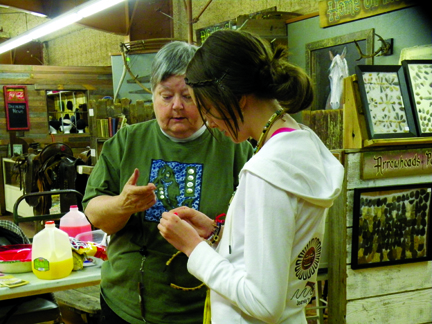Medicare-Covered Preventive Services in 2011
Kitty Custer
SHIBA Program Coordinator
Medicare covers a number of preventive care services. You have the right to receive Medicare-covered preventive services whether you are enrolled in Original Medicare or a Medicare private health plan (Medicare Advantage). Starting in 2011 you will not have to pay a coinsurance or deductible for preventive services that are recommended by the U.S. Preventive Task Force if you are in Original Medicare.
Our January article for the “Senior Scene†newspaper listed those preventive services and is reprinted below as a reminder. You can review “Preventive Services Checklist†on p.45 of your “Medicare and You 2011†book and read details on pages 29 through 44. Talk with your doctor about which preventive services Medicare will cover for you.
From listening to SHIBA clients, we have learned that sometimes the doctor’s office charges the patient inappropriately for preventive services. Check with your doctor so that the correct coding for the services is used. Then Medicare (or your Medicare Advantage plan) will be billed correctly.
- Abdominal Aortic Aneurysm Screening–a one-time screening ultrasound for people at risk.
- Osteoporosis Screening-Bone Mass Measurements. Helps to see if you are at risk for broken bones.
- Heart Disease Screening–blood tests that help detect conditions that may lead to a heart attack or stroke.
- Colon Cancer screenings – these tests help find precancerous growths or find cancer early when treatment is most effective.
- Diabetes Screenings–these tests are covered if you have any of the following risk factors: high blood pressure, history of abnormal cholesterol and triglyceride levels, obesity, or a history of high blood sugar.
- Vaccinations: Hepatitis B (for those at medium to high risk), flu, and pneumonia shots.
- Glaucoma tests- if at high risk for this eye disease.
- HIV Screening–for anyone with Medicare who asks for the test.
- Mammogram–x-ray to check women for breast cancer.
- Medical Nutrition Therapy–if you have diabetes or kidney disease.
- Pap Tests and Pelvic Exams–checks for cancer in women.
- Physical Exams–Medicare covers two types of physical exams
- “Welcome to Medicare†covered within the first 12 months you have part B of Medicare.
- Annual “wellness†visit–If you have had Part B for longer than 12 months, starting January 2011, you can get a yearly wellness visit to develop or update a personalized prevention plan based on your current health and risk factors.
- Prostate Cancer Screening–Prostate specific antigen (PSA) test. PSA checks for cancer in men.
- Smoking Cessation (counseling to stop smoking)
Each preventive service has an appropriate time frame (frequency). Ask your doctor to create an individualized screening schedule for the next 5 to 10 years.
The publication “Your Medicare Benefits†can by yours by calling the SHIBA HelpLine 1-800-562-6900 or locally 253-596-0918. Leave your request for the publication and give your name and address.
The SHIBA Program needs more volunteers to help people in Pierce County. Helping people with their health insurance questions is very rewarding work. Training is provided.
Kitty Custer, SHIBA Program Coordinator 253-798-4422 kcuster@co.pierce.wa.us
